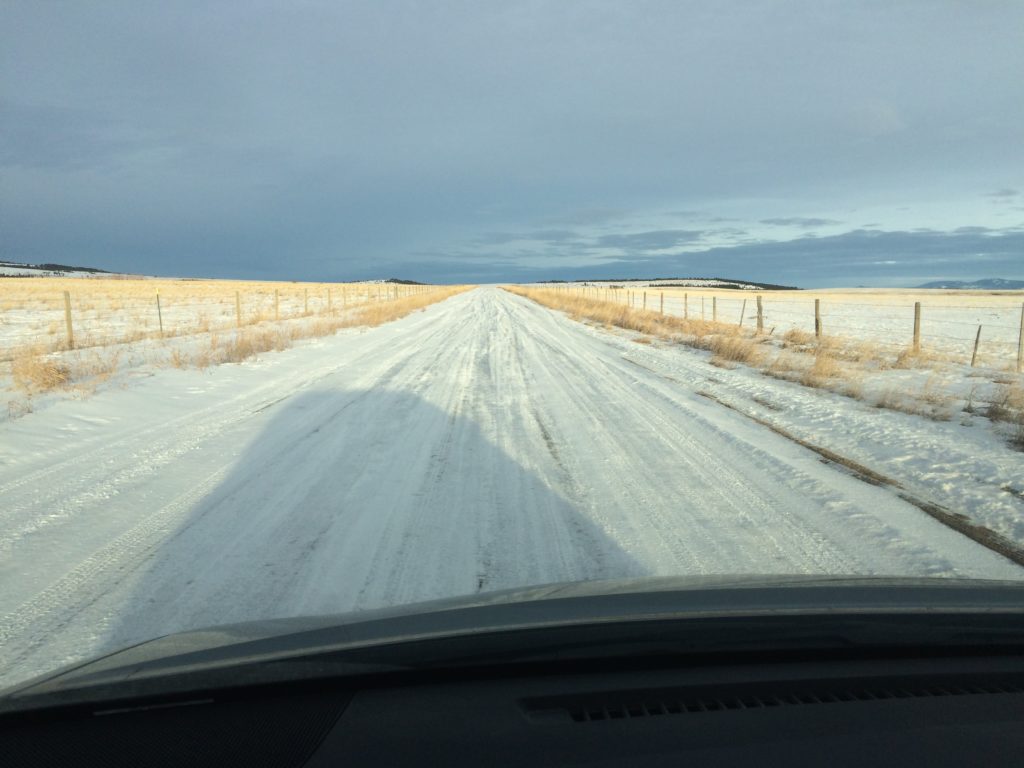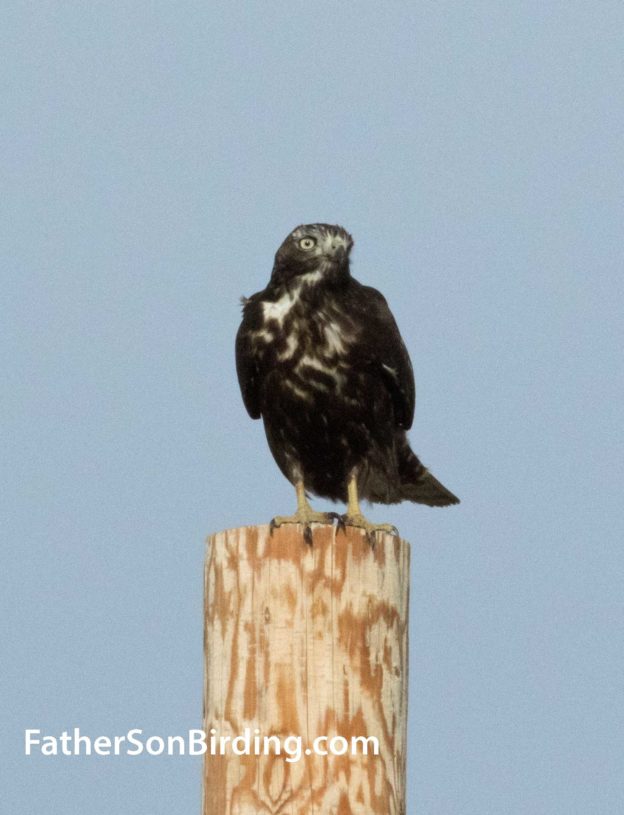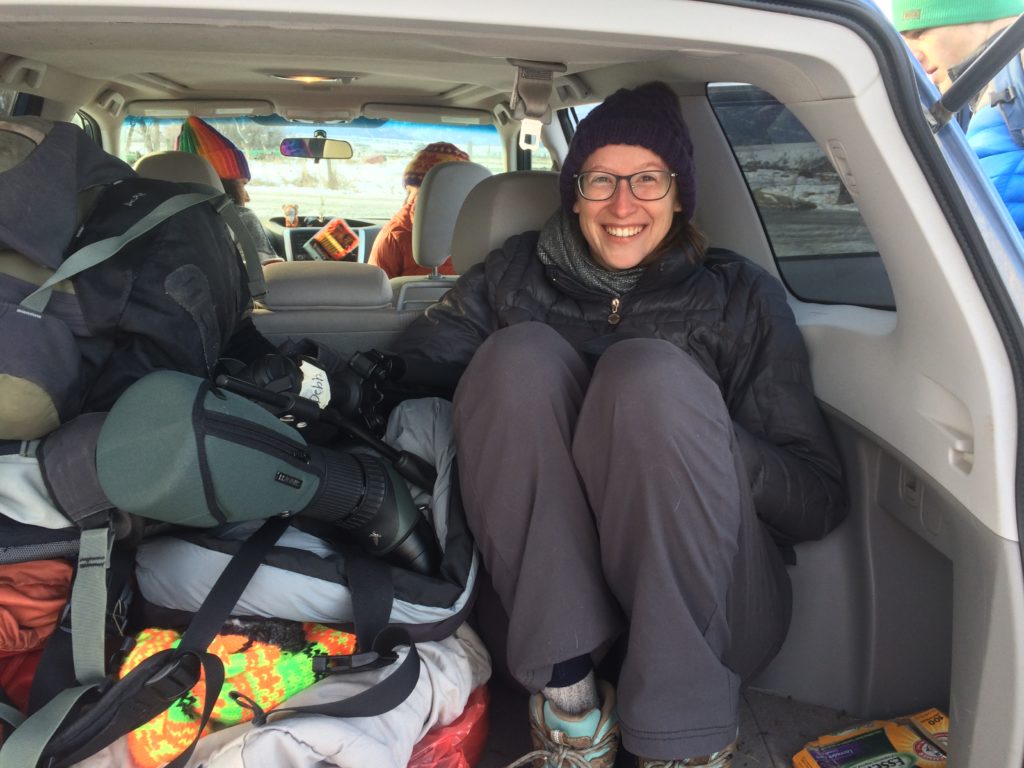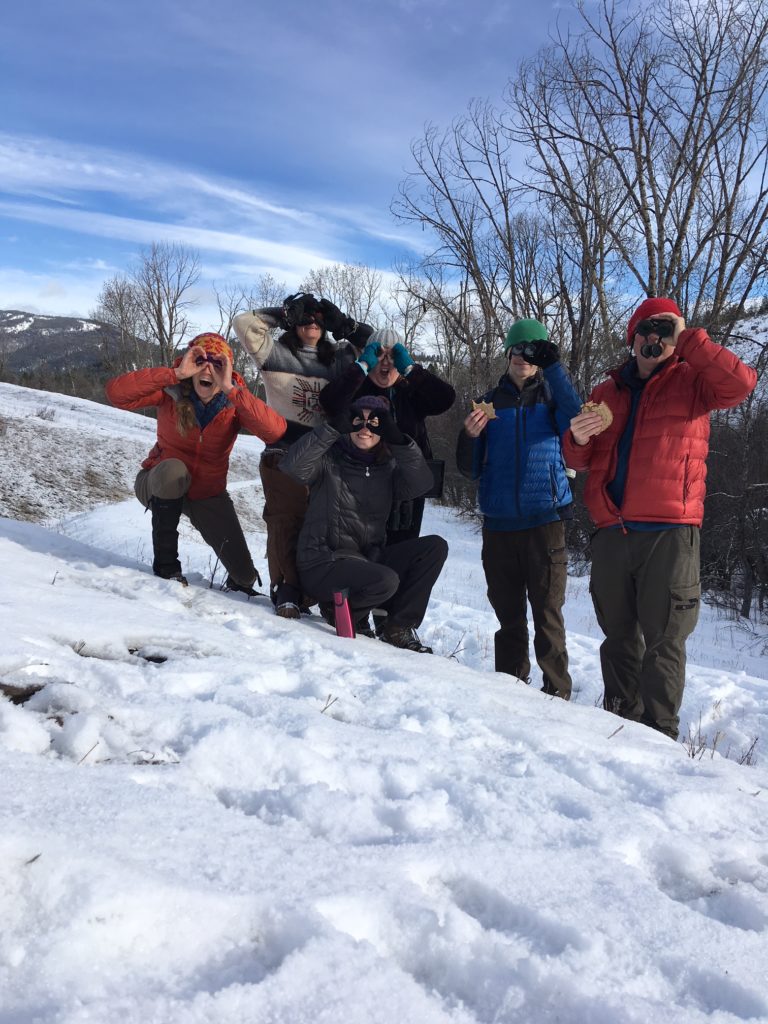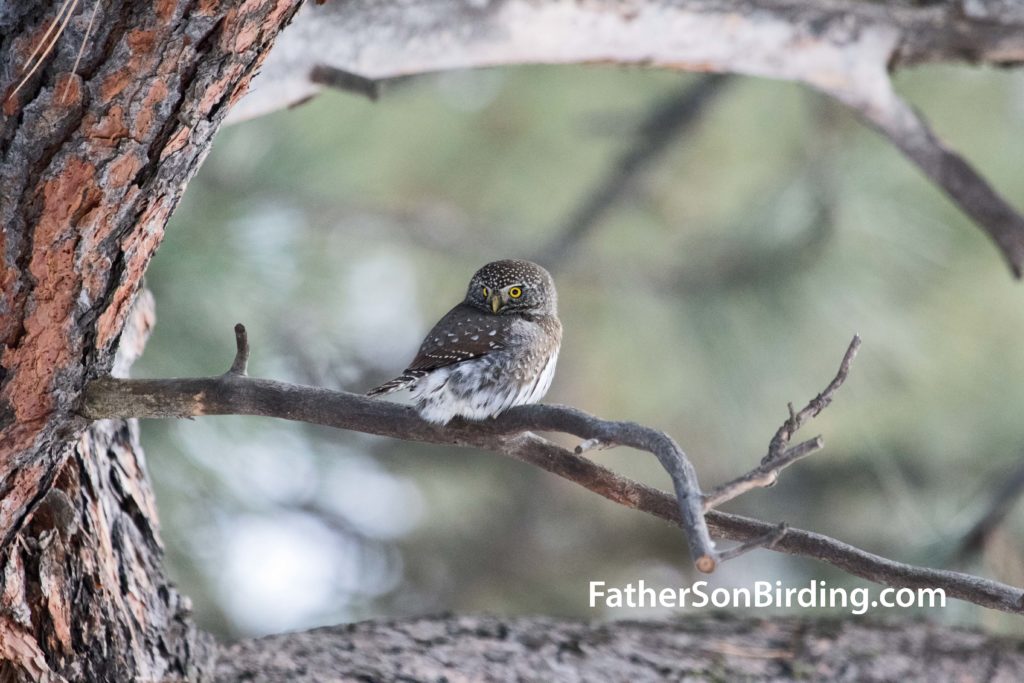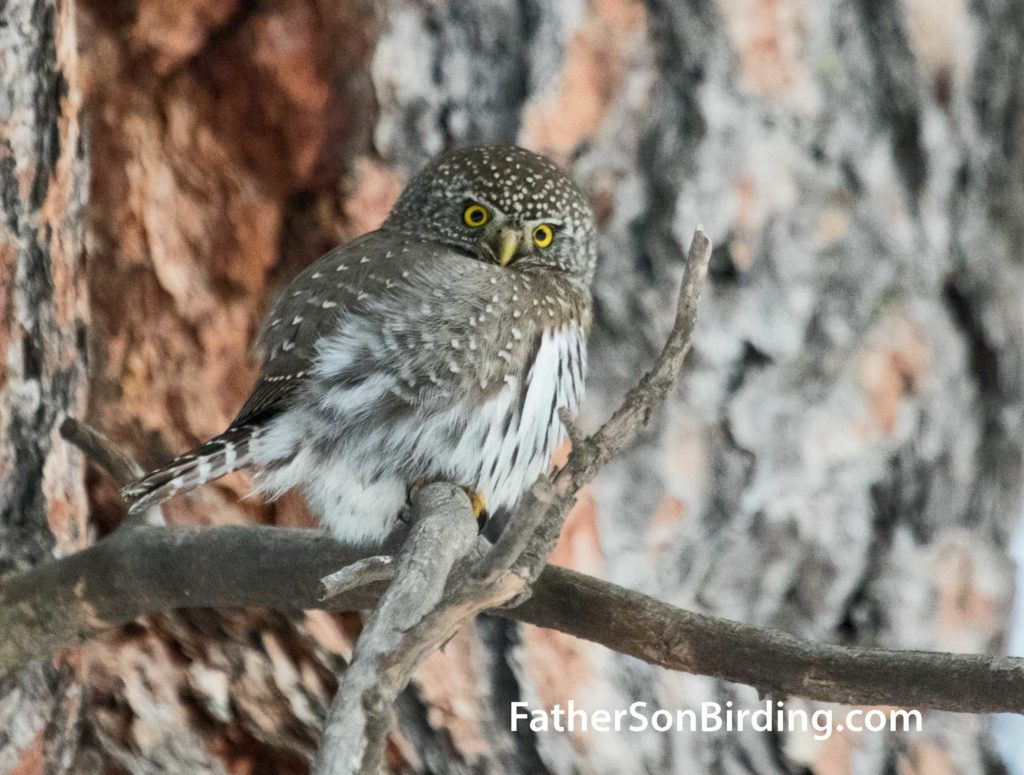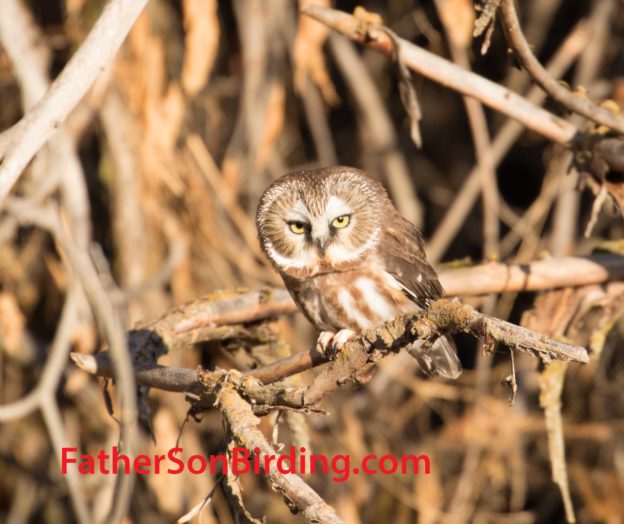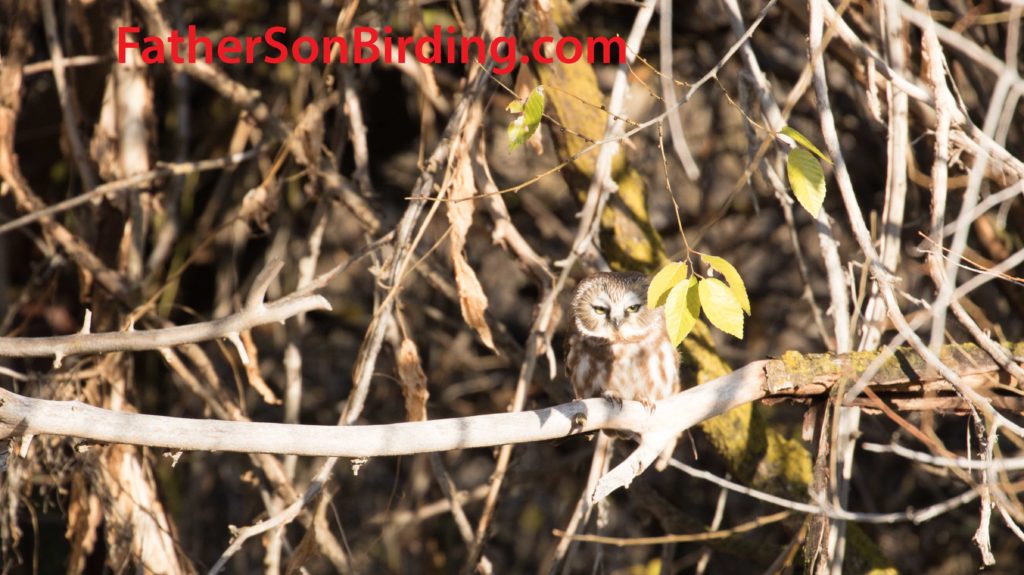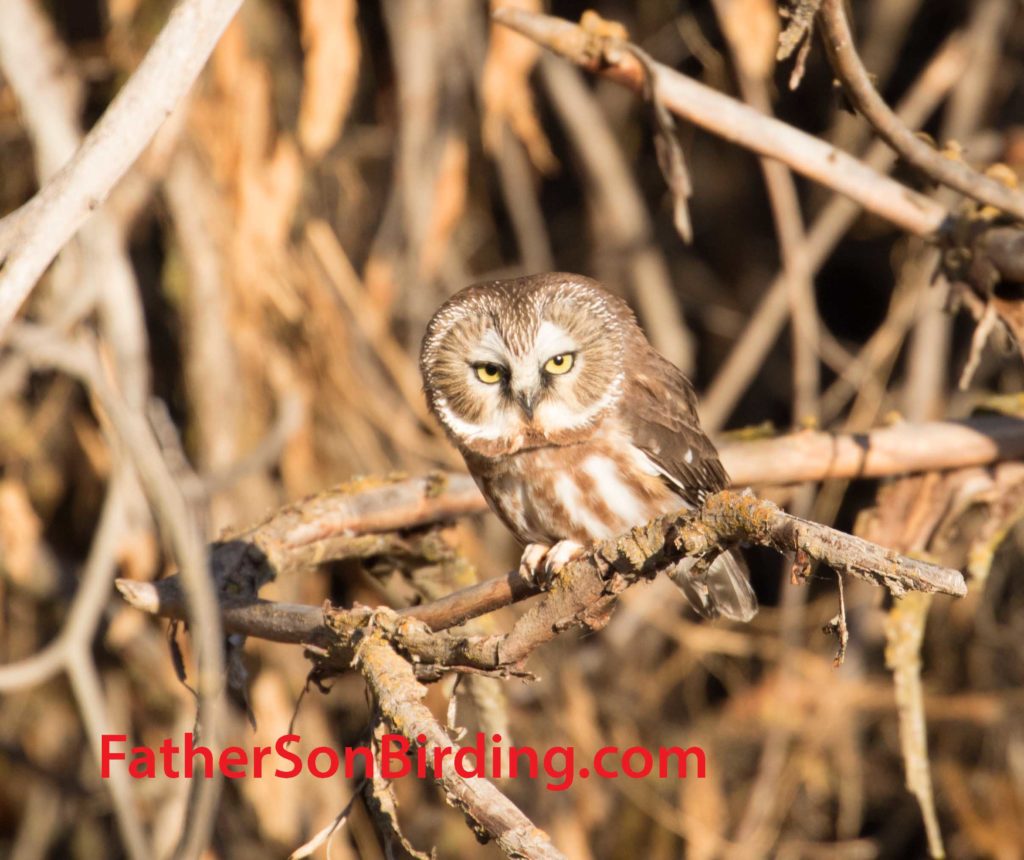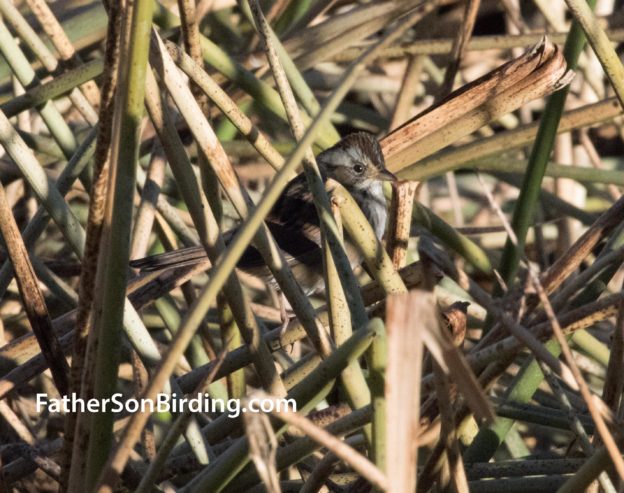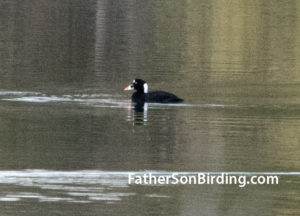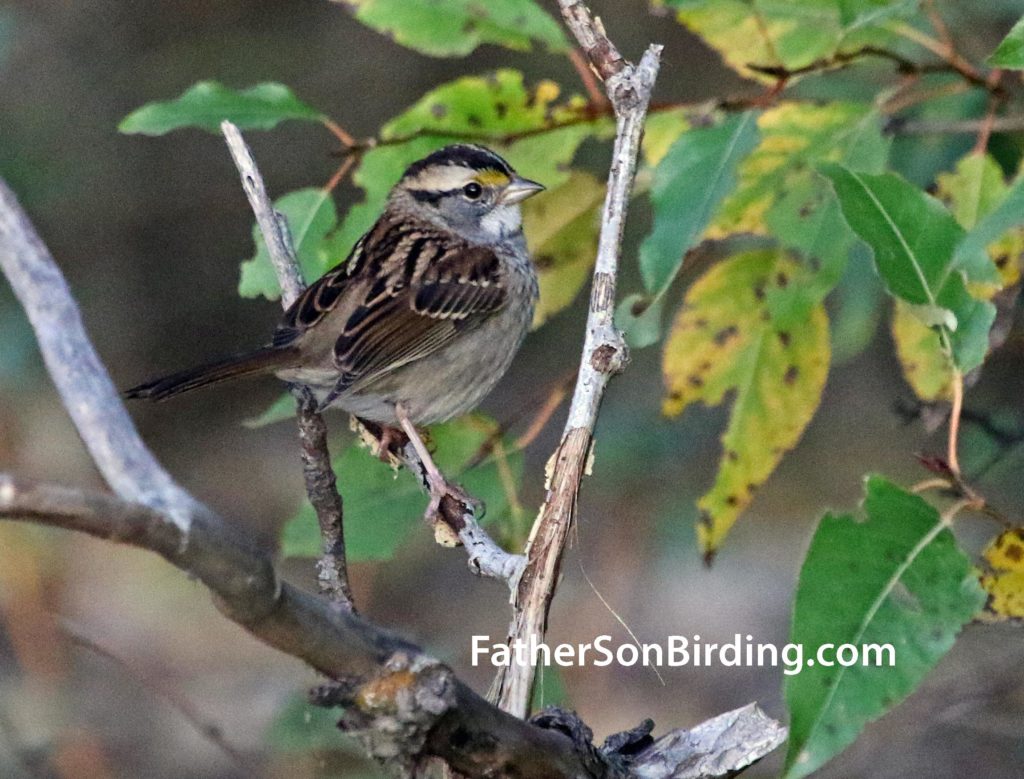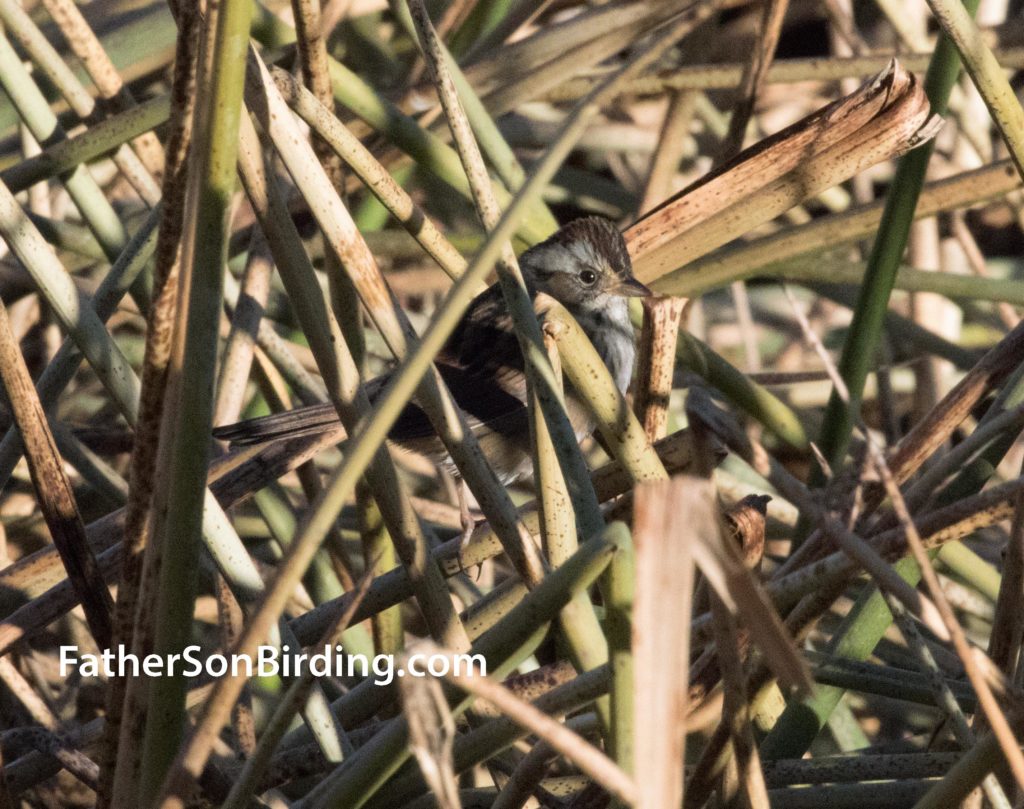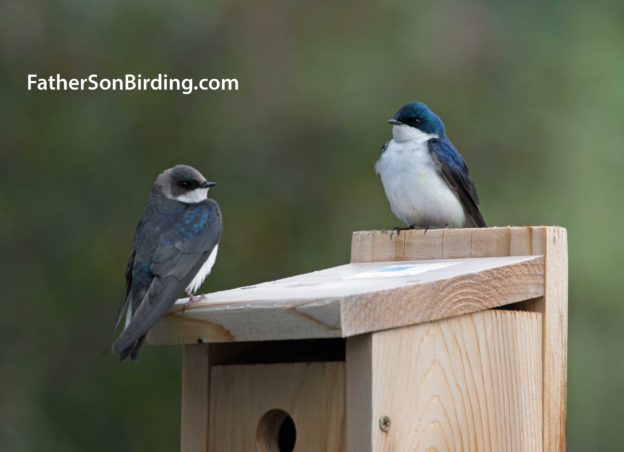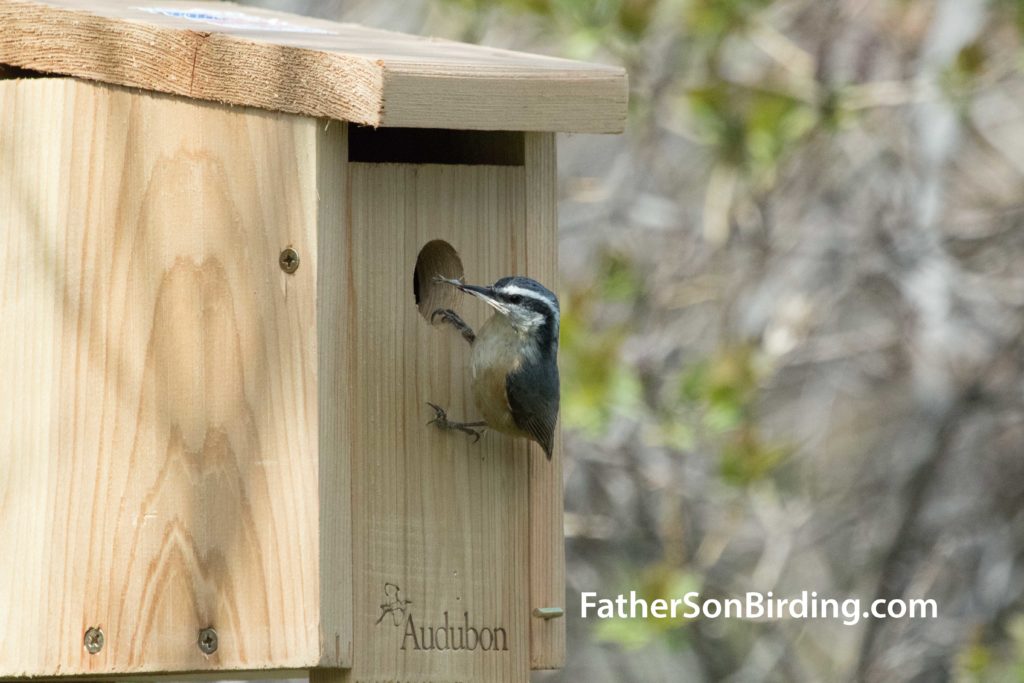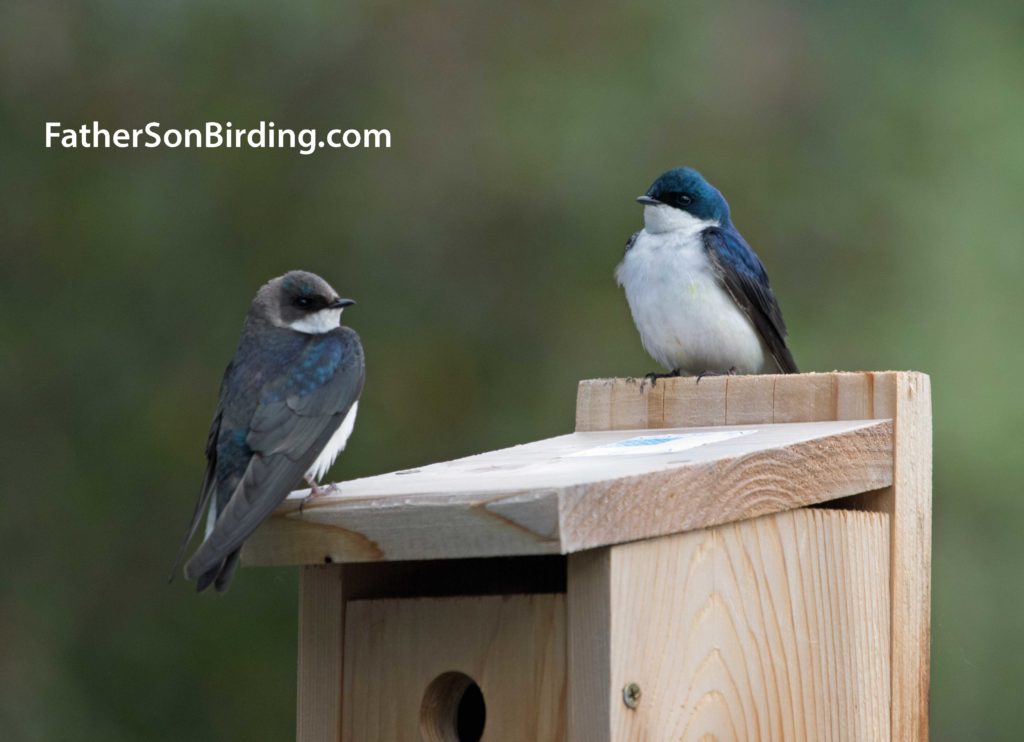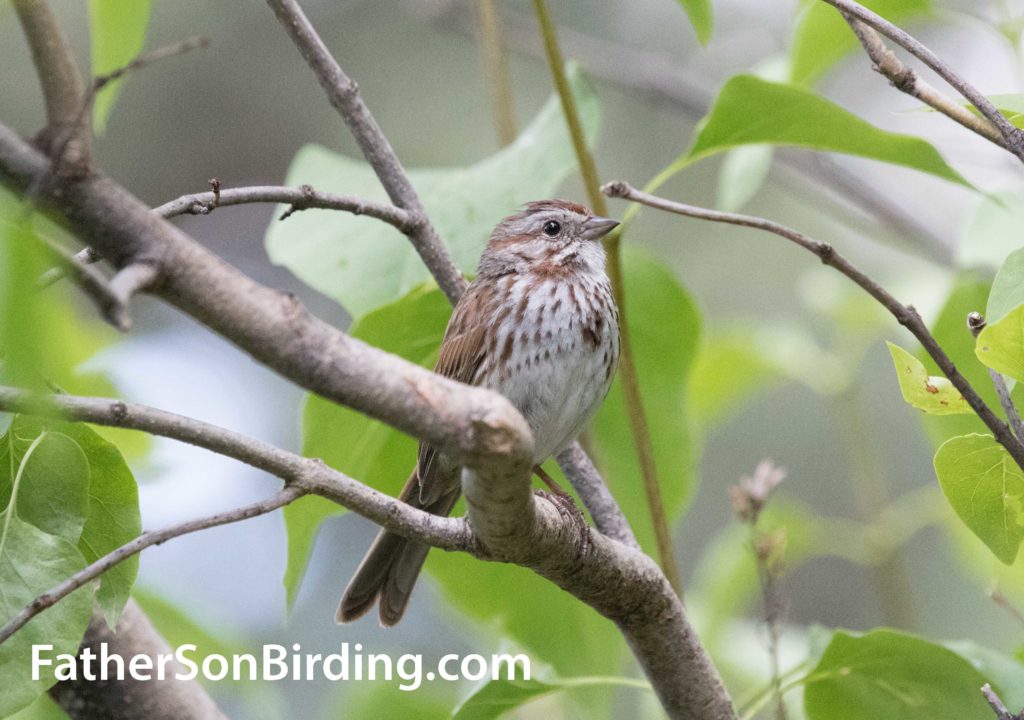Unless a Northern Hawk-Owl or flock of Pine Grosbeaks lands in our backyard, this will most likely be our last post of the year. We thought we’d wish you a Happy Holidays and New Year by recounting, what else, our second Christmas Bird Count of the year! See you in 2019!
Only five days after participating in the Missoula Christmas Bird Count, Braden and I awoke at 5:45 a.m. on December 20 for our second bird count of the season: the Deer Lodge Valley count, near Butte. After making the 90-minute drive, we were delighted to see the parking lot full at our rendezvous point, Grant-Kohrs Ranch National Historic Site. Veteran birder and biologist Gary Swant headed up today’s count. Gary is well-known in Montana for doing bird monitoring related to the superfund cleanup of the Butte-Anaconda mining complex, but this was our first chance to meet Gary in person!

Me and Braden, who was playing hooky from school, had two target species for the day: Snow Bunting and Gyrfalcon, both of which have foiled us throughout our four-year birding careers. Gary, though, paired us with his wife, Laura, and Carroll College Environmental Studies major Shane Sater to survey the area closest to where the Gyrfalcon had last been sighted, two weeks before.
We began our survey near Deer Lodge State Prison, slowly crawling along an icy road that bordered prison property and led toward spectacular forested mountains a few miles away. On the way, we stopped to observe Bald Eagles, Rough-legged Hawks, and frequent ravens and magpies. After turning around, however, a flock of smaller birds flew right at us. Laura identified Horned Larks, and Shane called out Snow Buntings—but neither Braden nor I got good enough looks to count them. Those sneaky, soul-scarring Snow Buntings!
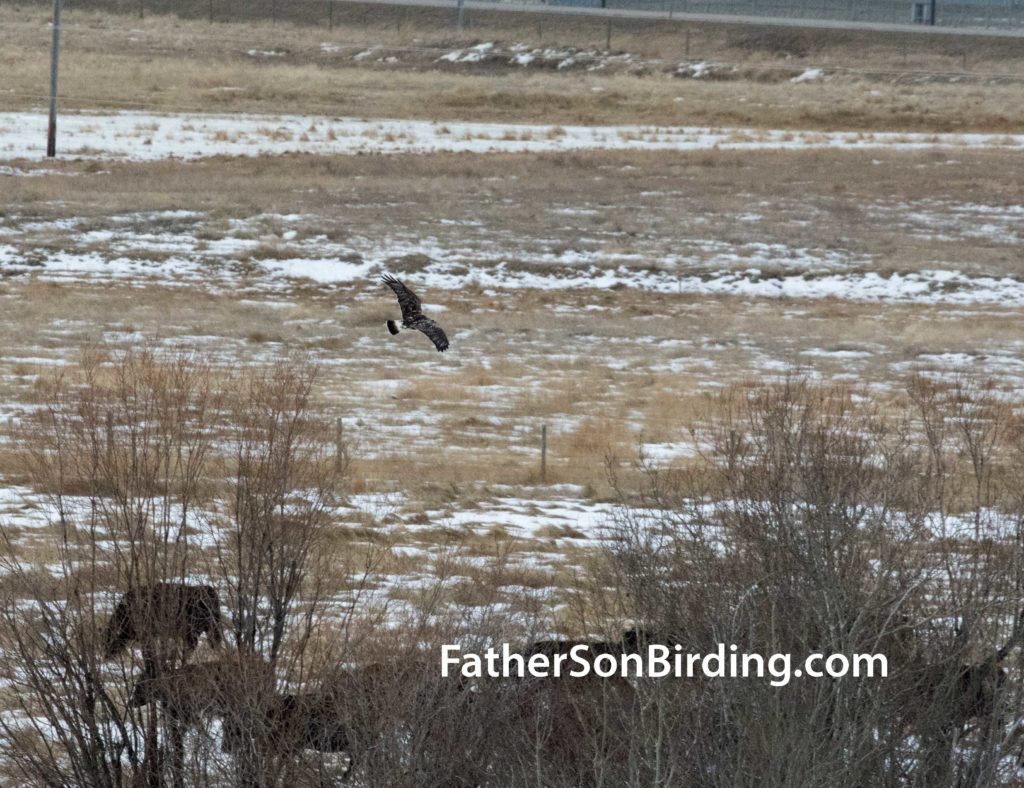
Only a few minutes later, however, I spotted a group of nine Gray Partridges in a narrow draw—the second week in a row we’d seen these handsome, elusive critters. Not too long after that, an entirely humorless guard from the State Prison pulled over to inform us that we were not allowed to watch birds within site of the prison. And Merry Christmas to you, too, buddy!
We ventured a short walk around the Deer Valley Golf Course, but the stiff wind quickly drove us back to our cars with only a few more pigeons and ravens to show for our suffering. As we kept exploring our sector, we happened upon a flock of about a thousand mallards. We saw more Bald Eagles and Roughies. Then, I spotted a raven on a telephone pole up ahead. I rolled down my window to take a picture.
“That’s not a raven,” Shane exclaimed. “That’s a raptor.”
“What?” I asked, not believing him.
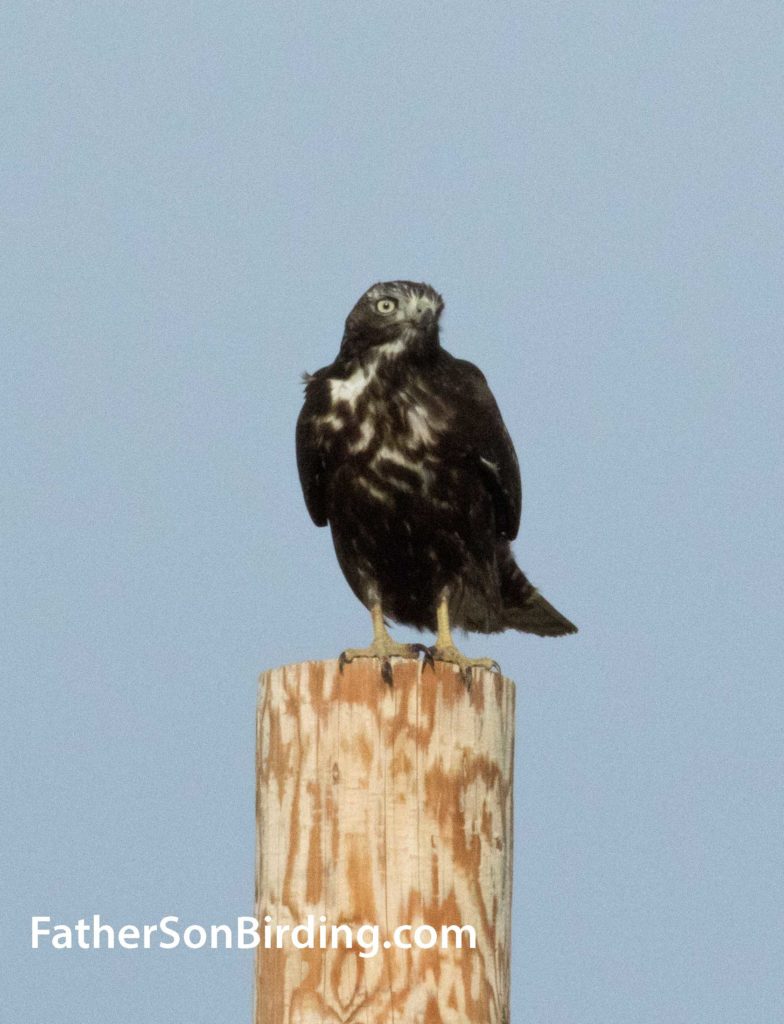
Sitting on the pole was Braden’s and my first ever Harlan’s hawk—an unusual black and white morph of the common Red-tailed. It was a stunning bird, and I got out to take a (poor) photo of it as it stared back at me with suspicious eyes.
After the count, we were treated to a scrumptious lunch of broccoli-cheddar soup and chicken salad crossant sandwiches provided by the Timber Eatery in Deer Lodge (do check them out—yummy!). As we polished off the last of the cookies, Gary did a quick check of the room to find that our combined species total reached 43 for the day. That wasn’t nearly as high as other parts of the state—Missoula had logged 86 species the week before—but the interesting terrain and great company more than compensated. After saying our farewells, Braden and I spent another hour searching for the Gyrfalcon and Snow Buntings, but the birds continued to scorn us. Maybe next year. Until then, Happy Holidays Everyone!
